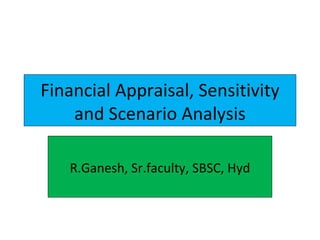The document outlines the financial appraisal process for capital investments, including methods such as payback period, net present value (NPV), internal rate of return (IRR), and discounted payback period. It discusses various types of investments and their expected cash flows, cost of capital, and performance evaluation metrics, while also highlighting financing operations in India, including equity and debt capital. Additionally, it covers project finance, corporate debt markets, and the financing landscape for startups and small businesses.
























